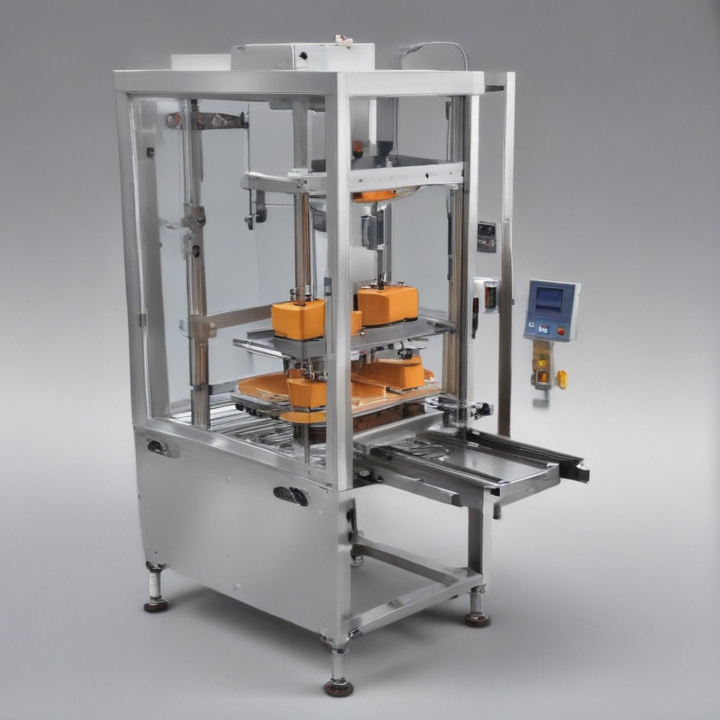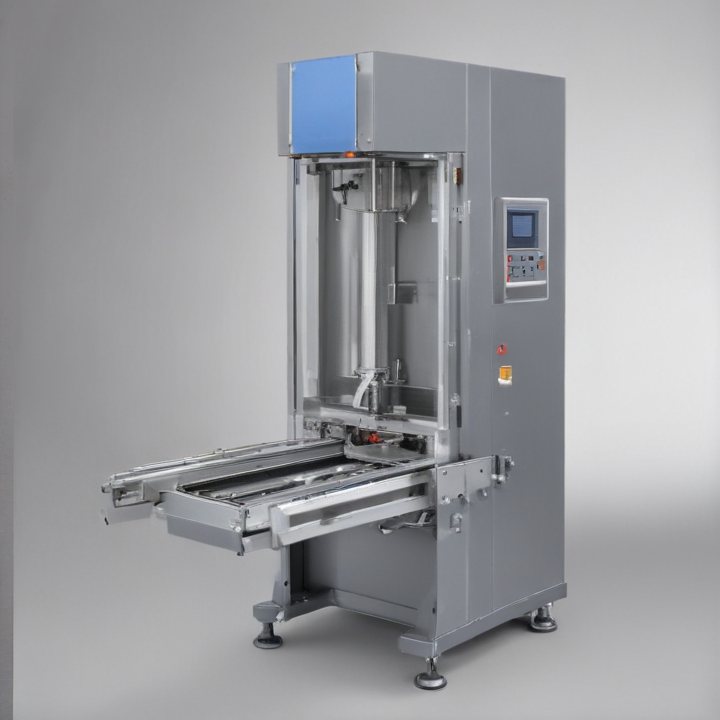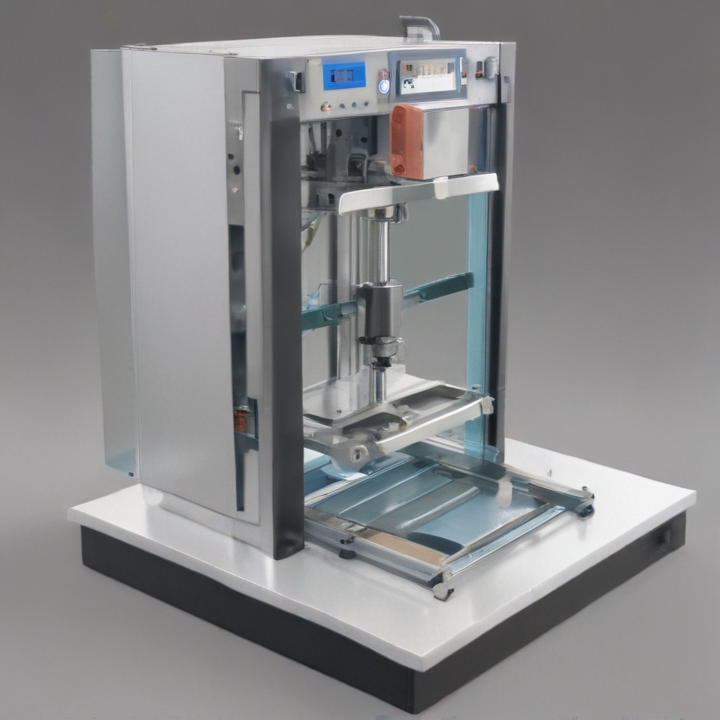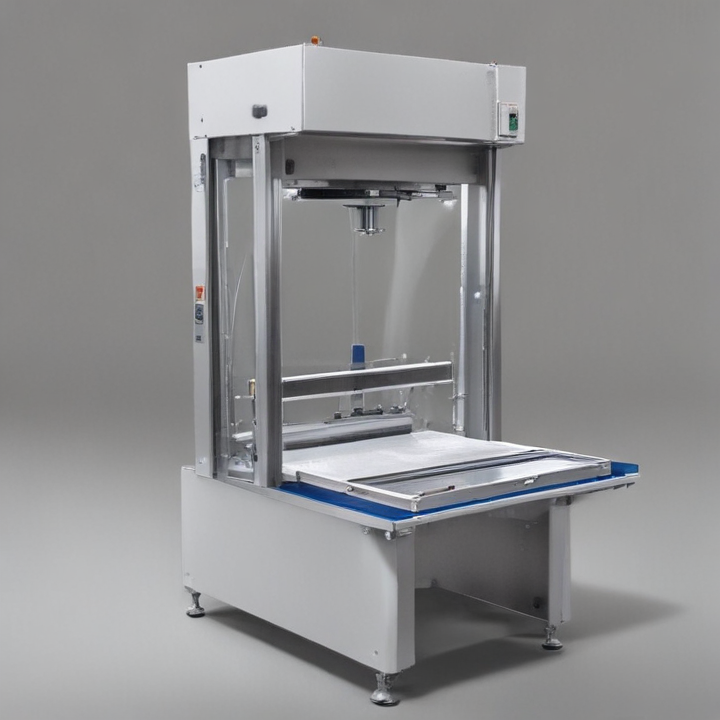List Technical Parameters of “vertical form fill sealing machine”
A vertical form fill sealing (VFFS) machine is widely used in the packaging industry for efficiently packing products into bags. Below are the critical technical parameters of a VFFS machine:
1. **Bag Types**: Capable of producing pillow bags, gusseted bags, and three-side or four-side seal bags.
2. **Bag Sizes**: Adjustable to accommodate different widths and lengths, typically ranging from 50mm to 400mm in width and 60mm to 600mm in length.
3. **Film Type & Width**: Can handle various types of film materials such as polyethylene, polypropylene, and laminates. Film width capabilities usually range from 100mm to 1200mm.
4. **Speed**: Operation speed varying from 30 to 200 bags per minute, depending on product and packaging specifications.
5. **Product Type**: Suitable for granules, powders, liquids, and solids; different dosing systems are available (e.g., auger filler for powder, multi-head weigher for granules).
6. **Film Thickness**: Compatible with film thicknesses between 30 to 120 microns.
7. **Sealing Type**: Supports different sealing mechanisms like heat sealing, cold sealing, or ultrasonic sealing.
8. **Control System**: Often equipped with a PLC (Programmable Logic Controller) for precise control and easy operation.
9. **Sensors**: Includes various sensors such as photoelectric sensors for accurate cutting and registration marks, and load cells for weighing.
10. **Material Compatibility**: Handles various packaging materials including plastic, paper-aluminum laminates, and foil-based films.
11. **Power Supply**: Standard electrical requirement falls between 220V to 380V, 50/60 Hz, single or three-phase.
12. **Air Requirements**: Compressed air, usually around 6-8 bar, for pneumatic functions.
13. **Machine Dimensions**: Vary based on specific models but typically range between 1000mm x 1200mm x 2000mm (W x D x H).
14. **Weight**: Machines generally weigh between 300 to 1000 kilograms.
15. **Human-Machine Interface (HMI)**: Touchscreen interface for easier operator control and parameter adjustments.
16. **Safety Features**: Emergency stop buttons, safety guards, and alarms for any operational errors.
These specifications help determine the suitable VFFS machine for specific packaging needs in various industries.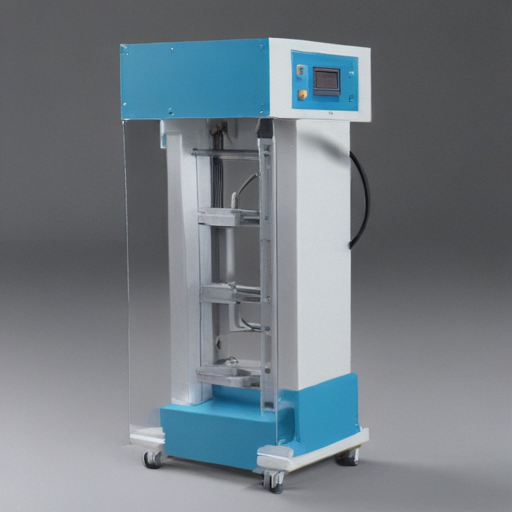
List Product features of “vertical form fill sealing machine”
A Vertical Form Fill Sealing (VFFS) machine is an intricate piece of packaging machinery designed to form, fill, and seal a variety of products efficiently. Below are the key features:
1. **Automated Operation**: Fully automated processes from bag formation to sealing, reducing the need for manual intervention and increasing productivity.
2. **Versatility**: Capable of handling a wide range of products, including liquids, granules, powders, and solids, making it suitable for various industries such as food, pharmaceuticals, and chemicals.
3. **Customizable Pouch Sizes**: Adjustable settings to create different pouch sizes and shapes, offering flexibility in packaging options to meet diverse market needs.
4. **High-Speed Production**: Advanced technology enables rapid packaging, significantly boosting production rates while maintaining accuracy and consistency.
5. **Quality Sealing**: Equipped with reliable sealing mechanisms (heat, ultrasonic, or impulse sealing) to ensure airtight and leak-proof packages.
6. **Touchscreen Interface**: User-friendly control panels with touchscreen interfaces for easy operation, monitoring, and troubleshooting.
7. **Advanced Sensors and Controls**: Integrated sensors and control systems to monitor and adjust parameters, ensuring precise filling and minimizing wastage.
8. **Material Compatibility**: Supports various packaging materials like polyethylene, polypropylene, laminates, and aluminum foil, offering compatibility based on product requirements.
9. **Hygienic Design**: Constructed with stainless steel and other sanitary materials to meet hygiene standards, particularly crucial for food and pharmaceutical applications.
10. **Ease of Maintenance**: Designed for easy access to key components for regular maintenance, ensuring minimal downtime and efficient operation.
11. **Multi-lane Functionality**: Some models feature multi-lane systems, allowing simultaneous packaging of multiple products, further increasing throughput.
12. **Integration Capabilities**: Can be integrated with other equipment like printers, labellers, and check weighers, enhancing the packaging line’s overall functionality.
13. **Energy Efficient**: Built with energy-efficient motors and components that reduce power consumption and operational costs.
14. **Safety Features**: Equipped with essential safety features, including emergency stops and protective guards, to ensure operator safety.
These features make VFFS machines a versatile, efficient, and essential tool for modern packaging operations.
List Application of “vertical form fill sealing machine”
A Vertical Form Fill Sealing (VFFS) machine is an automated assembly-line packaging system commonly used across various industries. Here are some of its prominent applications:
1. **Food Industry**:
– **Snack Foods**: Ideal for packaging chips, nuts, and popcorn.
– **Grains and Cereals**: Used for rice, oatmeal, and breakfast cereals.
– **Frozen Foods**: Efficient for packaging frozen vegetables, fruits, and ready meals.
– **Dairy Products**: Suitable for cheeses, yogurt mixes, and milk powders.
– **Liquids and Sauces**: Adapted VFFS machines can handle soups, sauces, and oils by utilizing special sealing techniques and materials.
2. **Beverages**:
– **Single-Serve Packs**: Frequently used for individual servings of coffee, tea, and drink powders.
3. **Pharmaceuticals**:
– **Medicinal Powders and Pills**: Used for packaging pharmaceutical powders, tablets, and capsules.
– **Medical Devices**: Packaging small medical devices and diagnostic kits.
4. **Chemical Industry**:
– **Fertilizers and Pesticides**: Efficiently packages granular or powdered chemicals.
– **Cleaning Agents**: Used for packaging detergents, soap powders, and cleaners.
5. **Cosmetics**:
– **Samples and Sachets**: Ideal for packaging single-use cosmetic samples such as lotions, creams, and shampoos.
6. **Pet Foods**:
– **Dry Kibbles and Treats**: Suitable for a wide range of pet food products, from dry kibbles to dog biscuits.
7. **Hardware and Small Parts**:
– **Nuts, Bolts, and Screws**: Often used in the hardware industry to package small components and fasteners.
8. **Agricultural Products**:
– **Seeds and Animal Feeds**: Appropriate for bagging seeds and various animal feeds.
The versatility and efficiency of VFFS machines make them indispensable in modern packaging operations across multiple industries.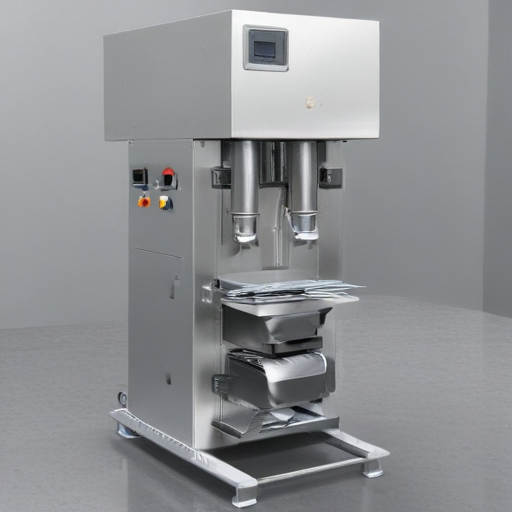
List Various Types of “vertical form fill sealing machine”
Vertical Form Fill Sealing (VFFS) machines are commonly used in the packaging industry to form, fill, and seal products efficiently. Here are some various types:
1. **Continuous Motion VFFS**: These machines operate continuously, meaning the film moves without stopping, and the sealing and cutting processes are synchronized with the film’s movement. They are ideal for high-speed production lines.
2. **Intermittent Motion VFFS**: In this type, the film stops momentarily for sealing and cutting. This intermittent motion makes it suitable for more complex packaging needs and lower-speed production lines.
3. **Stick Pack VFFS**: Designed for packaging liquids, powders, or granules in long, narrow packets. They are often used for single-serve applications such as sugar, spices, or drink mixes.
4. **Sachet VFFS**: These machines produce small, flat pouches known as sachets. They are ideal for packaging samples, pharmaceuticals, or condiments.
5. **Bag-in-Box VFFS**: This type is used to create larger bags that are then placed inside boxes. It is often used for bulk products, such as grains, powdered milk, or dog food.
6. **Pillow Bag VFFS**: The classic form used for a wide range of products, creating a pillow-shaped bag. Commonly used for snacks, candies, and other dry goods.
7. **Gusseted Bag VFFS**: Creates bags with side gussets, which allow for more volume and easier standing. Ideal for coffee, pet food, and other bulk items.
8. **Quad Seal Bag VFFS**: Forms bags with four seals, providing better product presentation and enhanced stability. Frequently used in the coffee and pet food industries.
9. **Flat Bottom Bag VFFS**: Produces bags with a flat bottom that can stand upright. Suitable for high-visibility packaging applications like premium snacks and coffee.
10. **Vertical Stick Machine**: Specifically designed for making narrow, tall pouches, often used for pharmaceuticals and food samples, focusing on precision and accuracy.
Each type of VFFS machine is designed to meet specific packaging requirements, helping businesses optimize their production lines.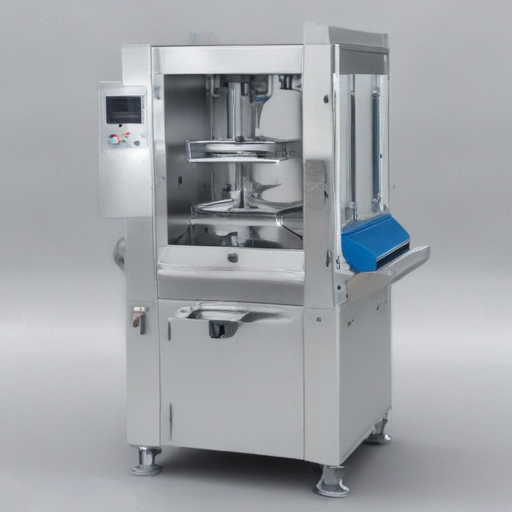
Custom Manufacturing Options for vertical form fill sealing machine
Custom manufacturing a vertical form fill sealing (VFFS) machine involves several options to tailor the equipment to specific production needs and operational environments. Here’s a concise overview of customizable features:
1. **Packaging Materials Compatibility**: Customize to handle different film types such as polyethylene, polypropylene, laminated films, and eco-friendly materials.
2. **Bag Styles and Sizes**: Configure to produce various bag styles, including pillow, gusseted, quad-seal, and flat-bottom bags in a diverse range of sizes.
3. **Sealing Mechanisms**: Options for heat sealing, ultrasonic sealing, or impulse sealing to suit different packaging materials and durability requirements.
4. **Filling Systems**: Integrate with distinct filler types like augers, volumetric cups, weighers, or liquid fillers, depending on the product (solid, liquid, powder).
5. **Printing and Labeling**: Add printers for date codes, batch numbers, or barcodes and options for labeling systems inline.
6. **Product Feeding**: Choose between different vibratory feeders, conveyors, or hoppers to ensure consistent product flow into the machine.
7. **Automation and Controls**: Advanced PLC-based control systems with touch screens for easy operation, recipe management, and integration with factory automation using IoT.
8. **Speed and Throughput**: Customize for varied production speeds and throughput capacities, from low to high-volume operations.
9. **Material Handling**: Options for material dosing, feeding, and transportation to ensure smooth operation and minimal downtime.
10. **Sanitary Design**: For food, pharmaceutical, or other hygienic applications, machines can be constructed with stainless steel and designed for easy cleaning.
11. **Additional Features**: Incorporate gas flushing, zipper closures, or tear notches to meet specific packaging requirements.
These custom options allow manufacturers to align the VFFS machine precisely with their product characteristics, production volume, and quality standards, ensuring optimal performance and efficiency.
List Quality Control and The Manufacturing Process of “vertical form fill sealing machine”
### Quality Control of Vertical Form Fill Sealing (VFFS) Machine
1. **Component Inspection:** Ensure all parts meet design specifications using precision instruments.
2. **Compliance Verification:** Confirm adherence to industry standards such as ISO and CE.
3. **Functional Testing:** Perform various trials to assess the machine’s performance, including sealing integrity and accuracy in forming and filling.
4. **Software Validation:** Check software for operational reliability and user interface ease.
5. **Calibration Checks:** Regularly calibrate sensors, scales, and other measurement tools.
6. **Durability Assessment:** Conduct lifecycle testing to ensure long-term reliability.
7. **Safety Inspections:** Ensure all safety mechanisms function correctly to protect operators.
8. **Final Quality Audit:** A comprehensive review before packaging and market release.
### Manufacturing Process of Vertical Form Fill Sealing (VFFS) Machine
1. **Design Phase:**
– Initiate by creating detailed CAD models and engineering drawings.
– Validate designs through simulations to ensure operational efficiency.
2. **Material Selection:**
– Choose high-quality stainless steel for chassis and other durable materials for components to ensure longevity and resist corrosion.
3. **Fabrication:**
– Employ CNC machining for precision parts crafting.
– Utilize laser cutting and welding to assemble the structural framework.
4. **Assembly:**
– Assemble individual components like the sealing jaws, film transport system, and filling mechanisms.
– Add electrical components such as control panels, sensors, and wiring.
– Integrate all components into the main frame.
5. **Software Integration:**
– Install and configure proprietary or specialized software to control the machine.
– Conduct software testing in tandem with mechanical systems.
6. **Testing and Calibration:**
– Perform rigorous mechanical and electrical testing.
– Calibrate the machine for accuracy in both filling and sealing operations.
7. **Finishing:**
– Apply necessary surface treatments like polishing or painting.
– Add labels and safety warnings.
8. **Packaging:**
– Disassemble sections if necessary for shipping.
– Pack with protective materials and crate for transport.
9. **Quality Assurance:**
– Final check to ensure no deviations from quality standards.
A structured approach ensures that a VFFS machine is reliable, efficient, and meets quality standards, ensuring customer satisfaction and regulatory compliance.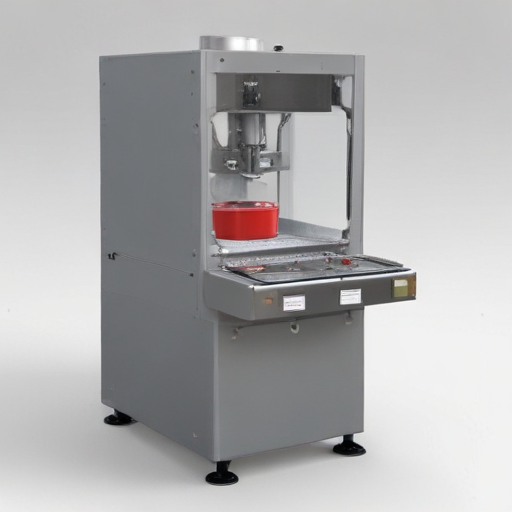
How to use “vertical form fill sealing machine”
A vertical form fill sealing machine (VFFS) is used to package products by forming, filling, and sealing bags from a roll of film. Here’s a step-by-step guide:
1. **Setup the Machine**:
– **Film Roll Installation**: Attach the roll of packaging film to the film roll holder ensuring it is properly aligned.
– **Threading the Film**: Guide the film through the rollers and around the forming collar.
2. **Forming the Bag**:
– The film is molded around a forming tube to create a bag shape.
3. **Sealing the Bag**:
– **Vertical Seal**: The vertical sealing bar seals the film along the edges.
– **Horizontal Seal**: At the bottom of the tube, horizontal sealing jaws close and seal the bottom of the bag.
4. **Filling the Bag**:
– The product is released from the filling system into the bag through the forming tube.
5. **Final Sealing and Cutting**:
– After filling, the top of the bag is sealed by the horizontal sealing jaws.
– The sealed bag is cut off from the roll, and the process repeats for the next bag.
6. **Adjustments and Settings**:
– **Temperature Control**: Adjust the temperature settings for both vertical and horizontal sealing to match the film material.
– **Bag Length**: Set the bag length according to packaging requirements.
– **Speed Settings**: Adjust the machine speed for optimal performance.
7. **Monitoring and Maintenance**:
– Regularly check seals for integrity and adjust as needed.
– Ensure all moving parts are lubricated and functioning correctly.
8. **Safety**: Always follow manufacturer’s safety guidelines and turn off the machine before performing any maintenance.
Using a VFFS machine efficiently involves understanding both the mechanical and control aspects, so refer to the machine’s manual for detailed instructions specific to your model.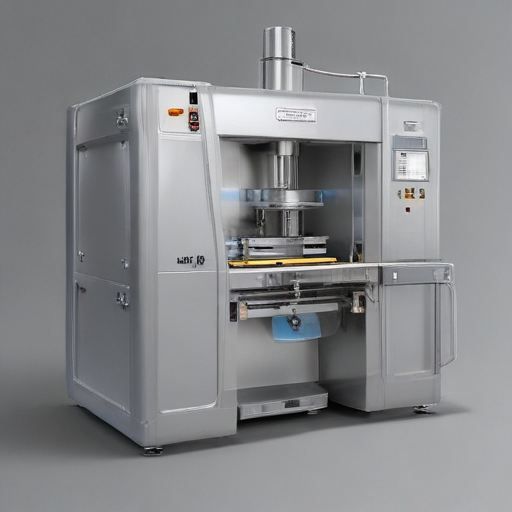
List Properties and Terms of “vertical form fill sealing machine”
### Properties of Vertical Form Fill Sealing Machines:
1. **Automated Operation**: Performs bag forming, filling, and sealing in one continuous process.
2. **Vertical Orientation**: Utilizes gravity to assist in the filling process, suitable for various products, from liquids to granular materials.
3. **Flexibility**: Capable of handling a wide range of packaging materials, such as plastic films, laminates, and foils.
4. **Speed**: High throughput capabilities, making it suitable for large-scale production.
5. **Precision**: Ensures accurate filling and precise cutting to minimize waste and maintain uniformity.
6. **Customization**: Adjustable settings to accommodate different bag sizes, shapes, and sealing methods.
7. **Integration**: Easy integration with other equipment like printers, labelers, and checkweighers.
### Terms Related to Vertical Form Fill Sealing Machines:
– **Forming Tube**: A component that shapes the packaging material into a tube.
– **Fillers**: Mechanisms that dispense the product into the formed bags (e.g., auger fillers, volumetric fillers).
– **Sealers**: Devices that hermetically seal the bags once filled, often using heat sealing technologies.
– **Cutting Mechanism**: Blades or thermal cutters that separate individual bags from a continuous film.
– **Film Roll**: A continuous sheet of packaging material fed into the machine.
– **Sensors**: Devices that monitor film alignment, product levels, and machine operations for precision and safety.
– **PLC (Programmable Logic Controller)**: Electronic system used to control various functions and processes within the machine.
– **HMI (Human-Machine Interface)**: User interface that allows operators to control and monitor the machine’s parameters.
– **Servo Motors**: Provide high precision in tasks like film feeding and sealing.
– **Pneumatics**: Air-driven components used for operations such as film cutting and product dispensing.
– **Batch Coding**: Printing system integrated to add manufacturing and expiration dates to the packages.
Vertical form fill sealing machines are crucial in many industries due to their efficiency, versatility, and precision. They streamline the packaging process, ensuring consistency and quality.
List The Evolution history of “vertical form fill sealing machine”
The Vertical Form Fill Seal (VFFS) machine has evolved significantly since its inception in the mid-20th century, driven by advancements in technology, materials, and industry demands. Here’s a concise evolution history:
**1950s**: The concept of form-fill-seal technology emerged, focusing primarily on simplifying packaging processes. Early machines were rudimentary, relying heavily on manual control and simple mechanisms that formed, filled, and sealed products in plastic or paper film.
**1960s-1970s**: The technology matured with innovations in automation and material science. Introduction of intermittent motion VFFS machines allowed for higher precision and efficiency. Heat-sealing techniques improved, enabling reliable hermetic seals for various products. The adoption of microprocessors began, enhancing control and flexibility.
**1980s**: PLC (Programmable Logic Controller) technology revolutionized VFFS machines. Automation levels increased, allowing for better repeatability and reduced labor costs. Servo motor technology started to appear, offering improved accuracy and speed. Machines became more versatile, handling a wider range of products and packaging materials.
**1990s**: The focus shifted to user-friendly interfaces and adaptability. Touchscreen HMIs (Human-Machine Interfaces) made programming and control easier. Advancements in film materials, like multi-layer laminates, improved barrier properties and packaging integrity. Real-time diagnostics and modular designs enhanced maintenance and reduced downtime.
**2000s**: Integration of digital technology and the Internet of Things (IoT) began to influence VFFS machines. Machines could now collect and analyze data for predictive maintenance and process optimization. Improvements in servo and drive technologies allowed even higher speeds and precision.
**2010s-2020s**: Sustainability and flexibility became key focus areas. Development of eco-friendly materials and machines capable of handling recyclable or biodegradable films gained prominence. VFFS machines incorporated sophisticated sensors, AI, and machine learning, offering unprecedented levels of customization, efficiency, and reliability.
Today’s VFFS machines are highly automated, versatile, and capable of producing diverse package formats. Enhanced digital integration allows seamless operation within smart factories, ensuring that the technology continues to evolve and meet the dynamic needs of the packaging industry.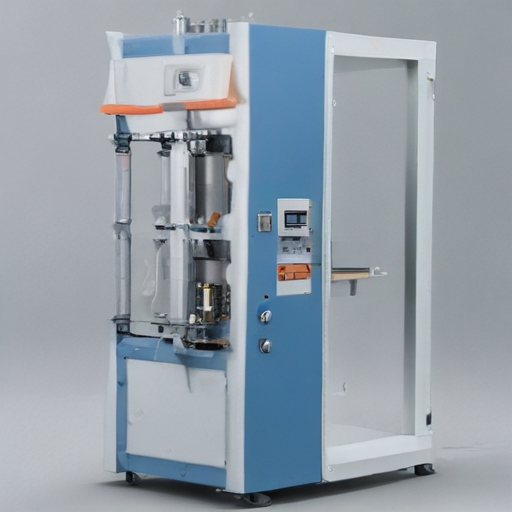
How to Select a Reliable vertical form fill sealing machine
Selecting a reliable vertical form fill sealing (VFFS) machine is crucial for optimizing packaging operations. Here are key considerations to help you make an informed decision:
1. **Production Requirements**: Analyze the speed and volume of packaging required. Match the machine’s capacity with your production needs to ensure efficiency.
2. **Material Compatibility**: Ensure the VFFS machine is compatible with the packaging materials (films, laminates) you plan to use. Different machines handle different materials with varying levels of efficiency and reliability.
3. **Flexibility**: Opt for machines with adjustable settings and versatile features to accommodate various product sizes and types. This flexibility is essential if you plan to package different products using the same machine.
4. **Precision and Accuracy**: Look for machines that offer high precision in filling and sealing to minimize waste and ensure product consistency. Advanced models often come with weighing and checking systems to maintain accuracy.
5. **Durability and Build Quality**: Choose machines built with robust materials to ensure longevity. Stainless steel models are often preferred for their durability and compliance with hygiene standards.
6. **Ease of Operation and Maintenance**: User-friendly interfaces and easy maintenance are critical for minimizing downtime. Machines with touch-screen controls and clear operational guidelines can improve productivity.
7. **After-Sales Support and Service**: Reliable technical support and easy availability of spare parts are essential. Check the manufacturer’s reputation for customer service and their ability to provide prompt assistance if issues arise.
8. **Budget Consideration**: Balance cost with features and reliability. A higher upfront cost for a durable and efficient machine can save money in the long run through reduced downtime and maintenance costs.
9. **Compliance and Certification**: Ensure the machine complies with industry standards and certifications relevant to your region and product type. This ensures quality and safety in your packaging process.
By carefully evaluating these factors, you can choose a reliable VFFS machine that meets your specific needs and enhances your packaging efficiency.
List “vertical form fill sealing machine” FAQ
### Vertical Form Fill Sealing Machine FAQs
**1. What is a Vertical Form Fill Sealing (VFFS) Machine?**
A VFFS machine is an automated packaging system used to form, fill, and seal products in bags from a roll of film. Ideal for packaging snacks, grains, powders, and liquids.
**2. How does a VFFS machine work?**
A roll of film is pulled through the machine and wrapped around a forming tube. The edges are sealed to form a tube, the product is dispensed into the tube, and then the package is sealed and cut to size.
**3. What types of products can be packaged?**
VFFS machines can handle a variety of products, including powders, granules, liquids, pastes, and solid products such as snacks, coffee, detergents, and frozen foods.
**4. What materials can be used for packaging?**
Various flexible packaging materials such as polyethylene, polypropylene, laminates, and coextruded films can be utilized.
**5. What are the benefits of using a VFFS machine?**
– **Efficiency:** High-speed and continuous operation.
– **Versatility:** Handles various product types and package sizes.
– **Accuracy:** Consistent fill levels and seal integrity.
– **Labor Savings:** Reduces the need for manual labor in packaging.
**6. How do you maintain a VFFS machine?**
Regular maintenance includes cleaning, inspecting seal jaws and forming tubes, checking for wear and tear on parts, and lubricating moving components as suggested by the manufacturer.
**7. Are VFFS machines energy-efficient?**
Modern VFFS machines are designed with energy efficiency in mind, often featuring energy-saving components and mechanisms to minimize power usage.
**8. What are common issues experienced with VFFS machines?**
– **Seal Integrity:** Poor sealing can occur due to incorrect temperature or contamination.
– **Film Tracking:** Misalignment of the film can cause defective packaging.
– **Product Spillage:** Inconsistent product flow may lead to spillage.
**9. How customizable are VFFS machines?**
These machines can be tailored to suit specific product requirements, varying in size, shape, and even the type of seal required (e.g., pillow pack, gusseted bags).
**10. What industries use VFFS machines?**
Commonly used in food and beverage, pharmaceutical, chemical, and consumer goods industries for their versatile packaging needs.
Top 10 FAQ with answer about vertical form fill sealing machine for Buyer Sourcing from China
Certainly! Here are the top 10 frequently asked questions (FAQ) with answers about vertical form fill sealing (VFFS) machines for buyers sourcing from China:
1. **What is a VFFS machine?**
– A VFFS machine is an automated packaging machine that forms, fills, and seals packages in one continuous operation. It’s widely used for packaging products like snacks, grains, and powders.
2. **What products can be packed using a VFFS machine?**
– VFFS machines can handle a variety of products including solids (snacks, grains), powders (flour, spices), and liquids (sauces, oils). Specific models cater to different product types.
3. **What materials can be used for packaging?**
– Common packaging materials include polyethylene, polypropylene, laminated films, and paper. Material selection depends on product compatibility and barrier properties needed.
4. **What are the key features to look for in a VFFS machine?**
– Essential features include speed (bags per minute), bag size flexibility, material compatibility, ease of operation, maintenance requirements, and reliability of the sealing mechanism.
5. **What certifications should I look for when sourcing from China?**
– Look for CE, ISO 9001, and GMP certifications. These indicate compliance with international safety and quality standards.
6. **How do I ensure the quality of the machine before purchase?**
– Request detailed specifications, factory inspection reports, and video demonstrations. Consider third-party inspections or work with reputable sourcing agents.
7. **What is the typical lead time for delivery?**
– Lead times vary, but it typically ranges from 4 to 12 weeks depending on the customization and manufacturer schedule.
8. **What kind of after-sales support is available?**
– Ensure the supplier offers technical support, spare parts availability, and warranties. Remote troubleshooting and on-site service options are beneficial.
9. **How do I handle shipping and import duties?**
– Suppliers often handle shipping logistics. Confirm Incoterms (like FOB, CIF) and be aware of import duties and taxes in your country. Consider using a freight forwarder.
10. **What should be included in the purchasing contract?**
– Ensure the contract covers product specifications, delivery time, payment terms, warranty, after-sales service, and penalties for non-performance.
These FAQs can help buyers effectively navigate the process of sourcing a VFFS machine from China.

